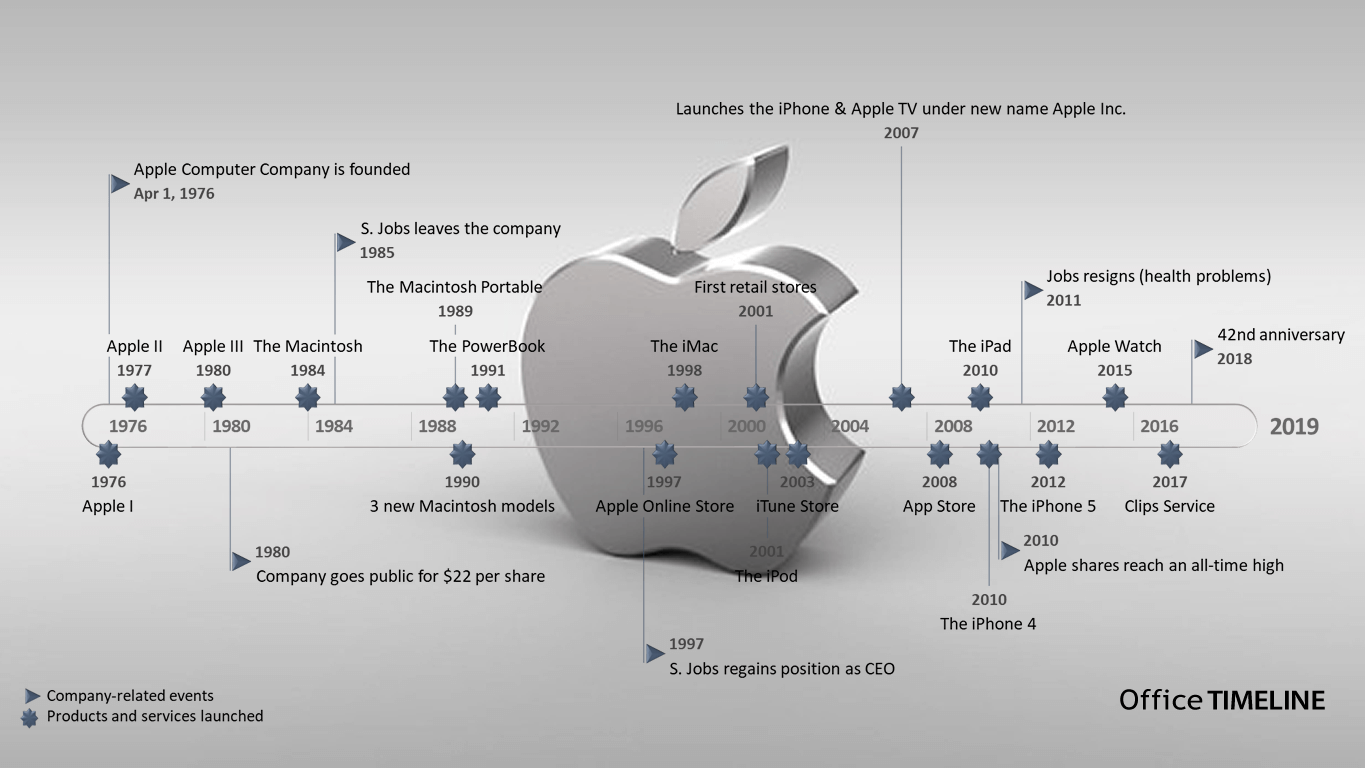In this article
The Story Our Hero Steve Jobs
Today we’re talking about one of my heroes, Steve Jobs. As you might know, I like learning from the top 1% of this world by looking at how they lived their life.
So today, we’re gonna dive deep into Steve Jobs success story, as he was really a person worth studying. I personally always looked up to Steve Jobs for multiple reasons which you will learn about here.
This article takes you through the incredible rise of Steve Jobs, from a curious kid in California to the co-founder of Apple. We’ll explore his early years, the birth of Apple, his departure and return, iconic inventions, and his lasting impact on technology and innovation.
Whether you are a tech geek or a budding entrepreneur with a vision, Jobs’ rise to success is a journey which all of us can learn from. So grab your flat white, sit comfortably, and get ready to learn about the life, traits, and achievements of a true visionary leader and the events that led to Steve Jobs’s success story.
Who Was Steve Jobs? Overview
| Full name | Steven Paul Jobs |
| Date of birth | 24th of February, 1955 |
| Date of passing | 5th of October, 2011 |
| Profession | Co-founder and CEO of Apple, board member and shareholder of Disney, CEO of NeXT, chairman of Pixar |
| Adopted parents | Clara and Paul Jobs |
| Siblings | Mona Simpson and Patricia Ann Jobs |
| Awards and honors | National Medal of Technology (1985), Samuel S. Beard Award (1987), PGA Vanguard Award (2002), Fortune Magazine’s Most Powerful Person in Business (2007), California Hall of Fame (2007), CEO of the Decade by Fortune Magazine (2009), Grammy Trustees Award (2012) |
1955: Where The Story Began For Steve Jobs
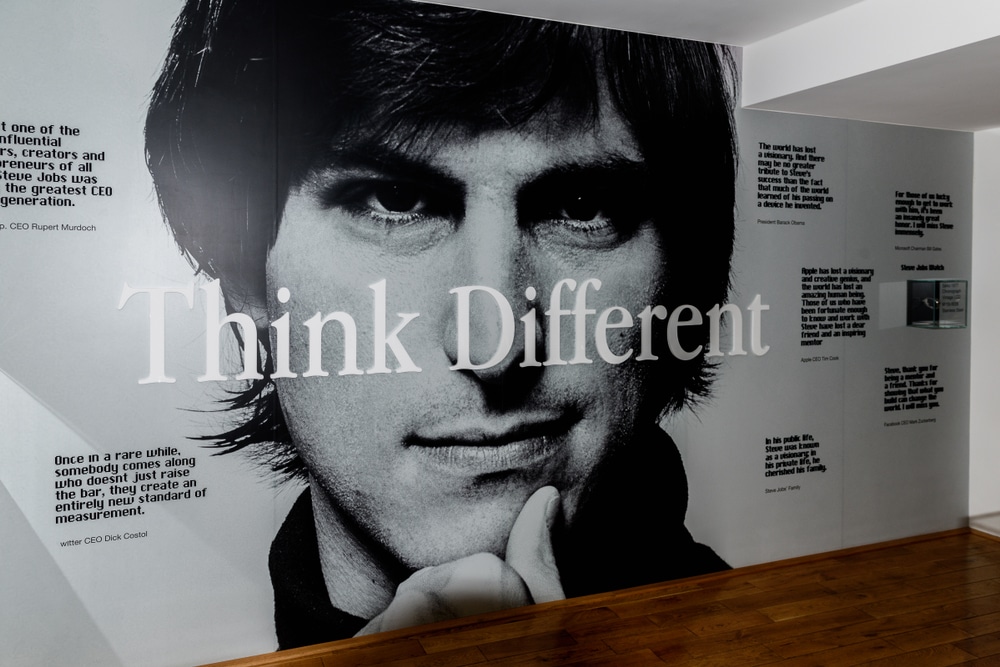
Jobs’ Formative Childhood
Steve Jobs’ path to becoming a household name began with his inquisitive childhood in California. Growing up amidst the counterculture of the 1960s and 1970s, he developed his unconventional thinking and rebellious spirit.
Raised by Paul and Clara Jobs, he thrived in their nurturing environment. Working alongside his father in a workshop honed his skills and instilled a can-do attitude, setting the stage for his groundbreaking career.
1975: The Birth of Apple
Igniting the Entrepreneurial Flame
Long before Steve Jobs became famous, he had a burning passion for entrepreneurship. He started with ventures like selling homemade electronics to neighbors, showcasing his unwavering drive for innovation and excellence.
The Innovative and Prodigy Entrepreneur Type
Steve Jobs was not just a prodigy, but also an innovative bntrepreneur because he pushed technology’s limits, predicted consumer needs, and combined form and function in groundbreaking products like the iPhone and Macintosh.
His risk-taking spirit, as seen in his return to Apple and daring product launches, exemplified his entrepreneurial boldness. Jobs’ legacy inspires future generations and proves the transformative power of visionary thinking and dedication to excellence.
Joining Forces with Steve Wozniak
Fate intervened when Steve Jobs crossed paths with Steve Wozniak in 1974, an electronics genius who shared his passion. This chance meeting sparked the creation of Apple Computing, Inc., which they founded in 1976. Wozniak’s technical genius complemented Jobs’ visionary thinking, changing the tech landscape forever.
1976: Apple I and Apple II
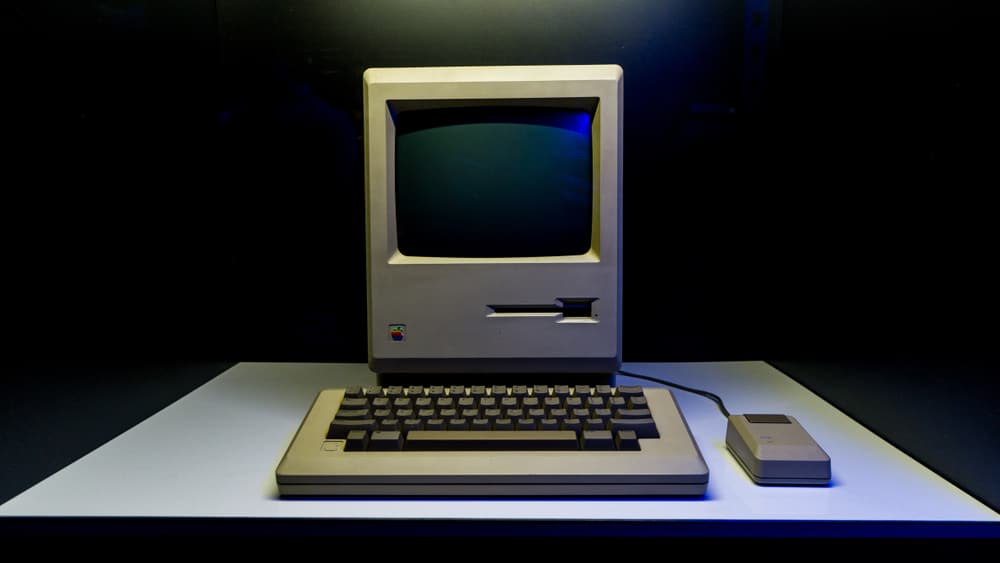
A Glimpse into the First Personal Computer
These iconic milestones in tech challenged the norm. The Apple I, born in a garage, epitomized innovation with Jobs’ vision and Wozniak’s skills in 1976. Just one year later, in 1977, Apple II democratized computing forever, making it accessible to everyone.
1983: The Macintosh Era

A Blend of Innovation and Style
This name would go down in history, reshaping personal computing. It embodied Jobs’ relentless pursuit of excellence, blending innovation and style. In 1983, Apple releases the Lisa computer, one of the first personal computers to feature a graphical user interface (GUI).The Macintosh’s GUI and sleek design made computers user-friendly.
The Marketing Genius of the “1984” Super Bowl Ad
The “1984” Super Bowl ad stands as a piece of marketing brilliance in Apple’s history. Directed by Ridley Scott, this cinematic masterpiece captured the global spotlight, casting Apple as a liberator amidst a dystopian world of conformity.
Beyond its commercial value, this ad showcased Jobs’ remarkable storytelling ability and commitment to being a trailblazer. It remains a testament to the power of creative marketing, an iconic moment in advertising history that transcends time.
Key Lesson #1 From Steve Jobs’ Success Story: Mastering Storytelling
A key lesson we can take from Steve Jobs’s mastery of storytelling is the importance of crafting a compelling narrative that connects with your audience on an emotional level. Jobs had an innate ability to frame complex ideas in a simple, relatable, and inspiring way. Whether unveiling a new product or sharing his personal journey, he mastered the art of storytelling to engage, captivate, and leave a lasting impact.
1986: Jobs’s Apple Departure
Creative Ventures Beyond Apple: Pixar and NeXT
Steve Jobs’ unexpected departure from Apple, the company he co-founded, created uncertainty for both him and the company. However, this divergence set in motion events leading to his triumphant return.
During his absence, in 1986 Jobs founded NeXT Computer, a company focused on creating high-end workstations. Also in the same year, Jobs acquired Pixar Animation Studios from Lucasfilm, setting the stage for future success in the animation industry.
1996: Steve Jobs’ Epic Return to Apple
How Jobs’s Leadership Saved Apple
In 1996 Apple acquired NeXT Computer, bringing Steve Jobs back to the company as the interim CEO of Apple. The company is in financial trouble at this time. By 1998, under Jobs’ leadership, Apple introduced the iMac, which became a major success and revitalized the company.
Key Lesson #2 From Steve Jobs’ Success Story: Think Different
At the heart of Steve Jobs’ success and innovative philosophy was “thinking different” – a call to disrupt the industry, explore new territories, and envision beyond the ordinary. It encouraged questioning assumptions, embracing diverse thinking, and approaching challenges unconventionally, serving as a guide to unlock creativity and push boundaries.
2000: Designing Tomorrow
The iMac and Beyond
The iMac wasn’t just a machine; it combined artistry and cutting-edge technology. Its audacious design broke norms, captivating the world with vibrant colors and performance.
The iPod Musical Revolution
In the early 2000s, Steve Jobs reshaped music with the iPod—a compact marvel housing entire libraries in your palm. His vision for simplicity merged technology and usability, revolutionizing the music experience. The iPod wasn’t a mere gadget; it was a game-changer, transforming how we relate to music.

iPhone Merging Communication, Entertainment, and Utility
In 2007, Jobs introduced the iPhone, merging communication, entertainment, and utility. This game-changer redefined innovation and disrupted industry hierarchies.
Beyond innovation, the iPhone triggered a seismic shift, toppling BlackBerry’s 42% market dominance, and rapidly disrupting established hierarchies by introducing a superior all-in-one handheld computer. Its profound influence reshaped industry dynamics, showcasing the iPhone’s transformative power.
2005-2021: Apple’s Growth Chart
Apple’s Net Income
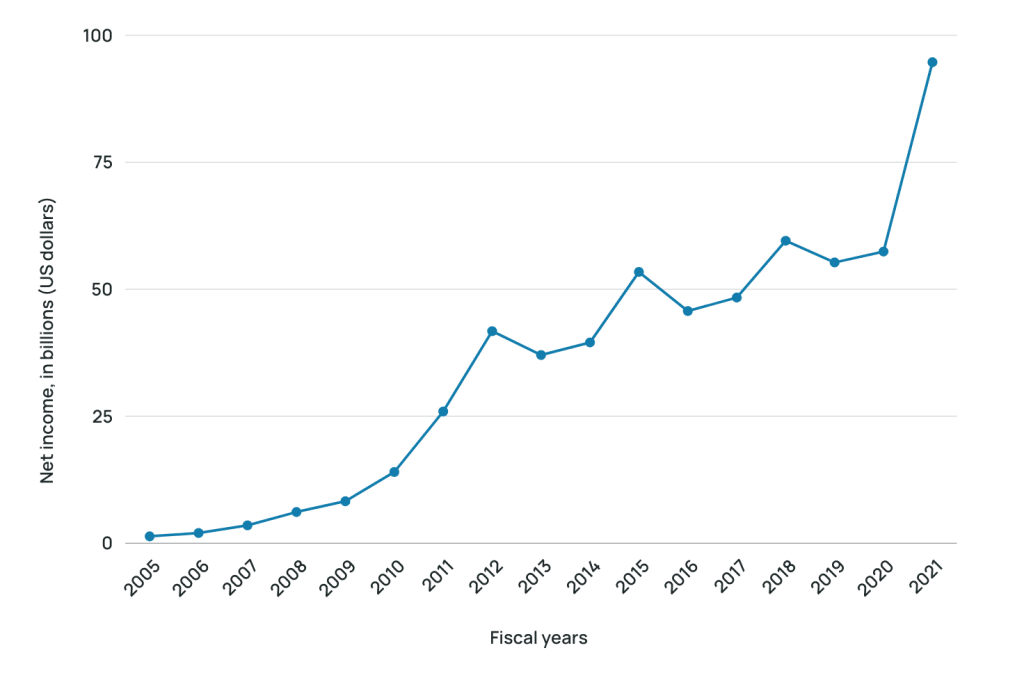
According to data from Statista.com, Apple’s net income experienced a remarkable ascent from 2005 to 2021. Starting at around 1.335 billion U.S. dollars in 2005, Apple’s net income grew consistently over the years, reaching remarkable heights. By 2021, Apple’s net income had grown massively, standing at a staggering 74.01 billion U.S. dollars, showcasing the company’s exceptional financial success and its enduring position as a global tech giant.
Key Lesson #3 From Steve Jobs’ Success Story: Embrace Failure
For Jobs, failure was not the end but a stepping stone. He viewed setbacks as opportunities for learning, refinement, and resilience. Jobs’ ability to rise from failure, channel disappointments into determination, and use mistakes to fuel his evolution underscores the importance of embracing failure on the road to success.
2011: End of Story – Steve Jobs Final Years
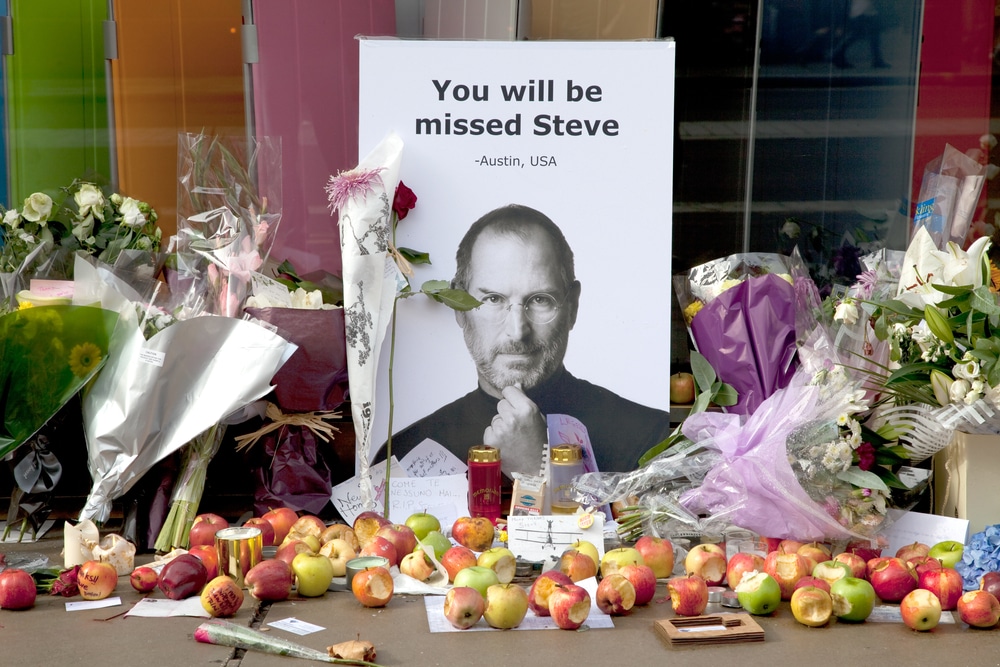
Steve Jobs’ Fight Against Pancreatic Cancer
Even as Jobs continued to shape the world through innovation, he faced a formidable adversary in the form of pancreatic cancer. In 2003, Jobs’ health took a serious turn as he was diagnosed with this aggressive disease. What followed was a period of personal and professional challenges that tested his resilience and determination.
Steve Jobs’s story came to an end on the 5th of October, 2011 – far too soon. He passed away at home, surrounded by his loving family.
Steve Jobs’s Lasting Legacy
Jobs’ legacy lives on through his innovations and his bold approach to challenging norms, inspiring entrepreneurs, creators, and dreamers. His impact extends beyond tech, encouraging us to embrace the unexpected and “think different”.
Jobs’ legacy extends to the very ethos of innovation. His bold pursuit of groundbreaking ideas and his willingness to take risks continue to inspire entrepreneurs, creators, and dreamers. The iconic “one more thing” reveal at Apple events became a symbol of the unexpected, urging us to imagine and embrace the uncharted.
5 Habits Steve Jobs Was Known For
Here’s how some of the habits that Steve Jobs were following in his day-to-day life.
1. Wake Up Early
Steve Jobs was known for being a morning person. He typically woke up around 6:00 AM, taking advantage of the quiet hours to start his day with a clear mind. This early start allowed him to plan his day and set priorities.
2. Focused Mornings
Mornings were reserved for face-to-face meetings with his product and management teams. Jobs valued direct communication and believed that in-person discussions were crucial for innovation and collaboration. This habit fostered tighter teamwork and faster decision-making.
3. Afternoon Design Time
In the afternoons, Jobs preferred to immerse himself in the design lab, working closely with Apple’s design team. This time was dedicated to refining products, ensuring that they met his high standards. He often engaged in hands-on work, reflecting his commitment to product excellence.
4. Reflection and Self-Questioning
Each day, Jobs would ask himself the question, “If today were the last day of my life, would I want to do what I am about to do today?” This habit of self-reflection helped him stay aligned with his passions and priorities, motivating him to focus on what truly mattered.
5. Evening Wind-Down
At the end of the day, Jobs would wind down by spending time with his family or reflecting on the day’s successes and challenges. This balance between work and personal life was crucial for his overall well-being and sustained creativity.
Best Steve Jobs Quotes

As a profound speaker whose words have touched millions of us around the world, it felt right to hear from the man himself through some of the best Steve Jobs quotes.
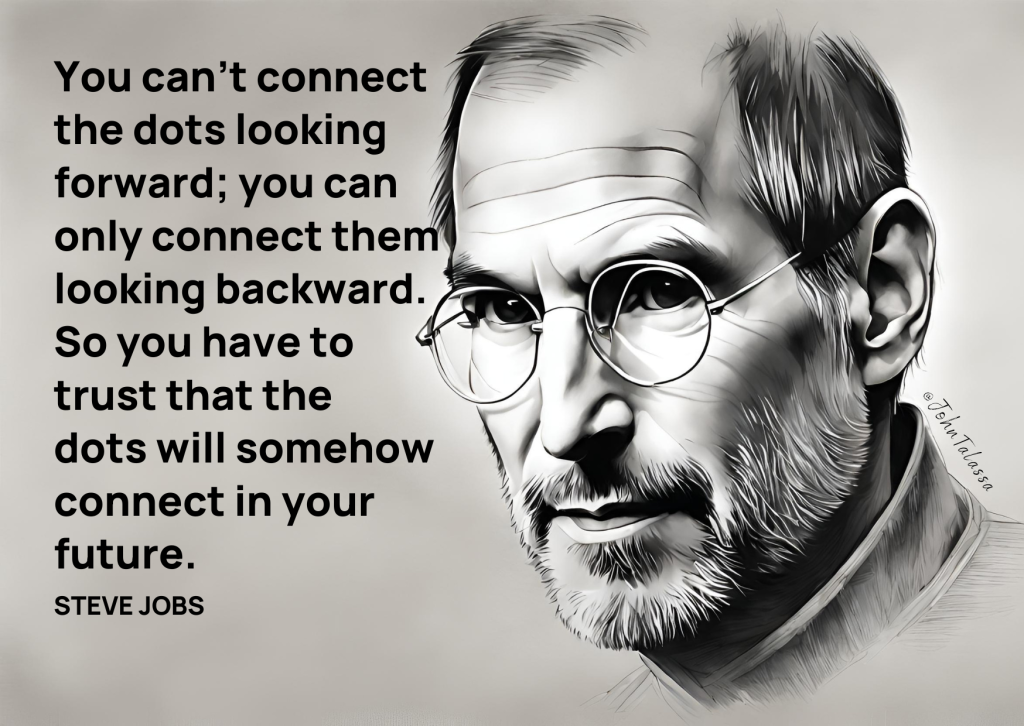
“You can’t connect the dots looking forward; you can only connect them looking backward. So you have to trust that the dots will somehow connect in your future.“
STEVE JOBS
This is a great reminder to those of us who tend to time travel in our minds, second-guessing what the future has in store and whether we’re making the right steps. As Steve so perfectly says, it’s essential to have trust that things will work out exactly how they’re supposed to.
If you struggle with this, look back at some of the harder points of your life – the times things didn’t work out how you wanted. When you look back now, are you grateful that they happened this way after all?
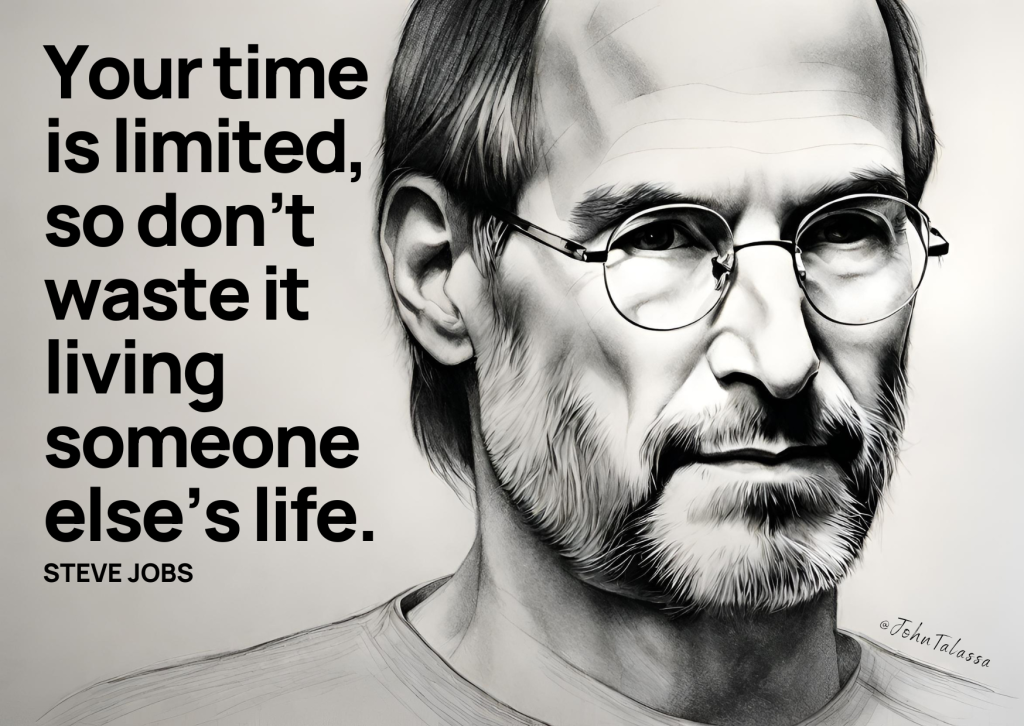
“Your time is limited, so don’t waste it living someone else’s life.”
STEVE JOBS
You don’t get a Steve Jobs success story by listening to what everybody else says. Extraordinary people become that way by doing things that are out of the ordinary.
You must be willing to take a chance on yourself and listen to your inner voice.
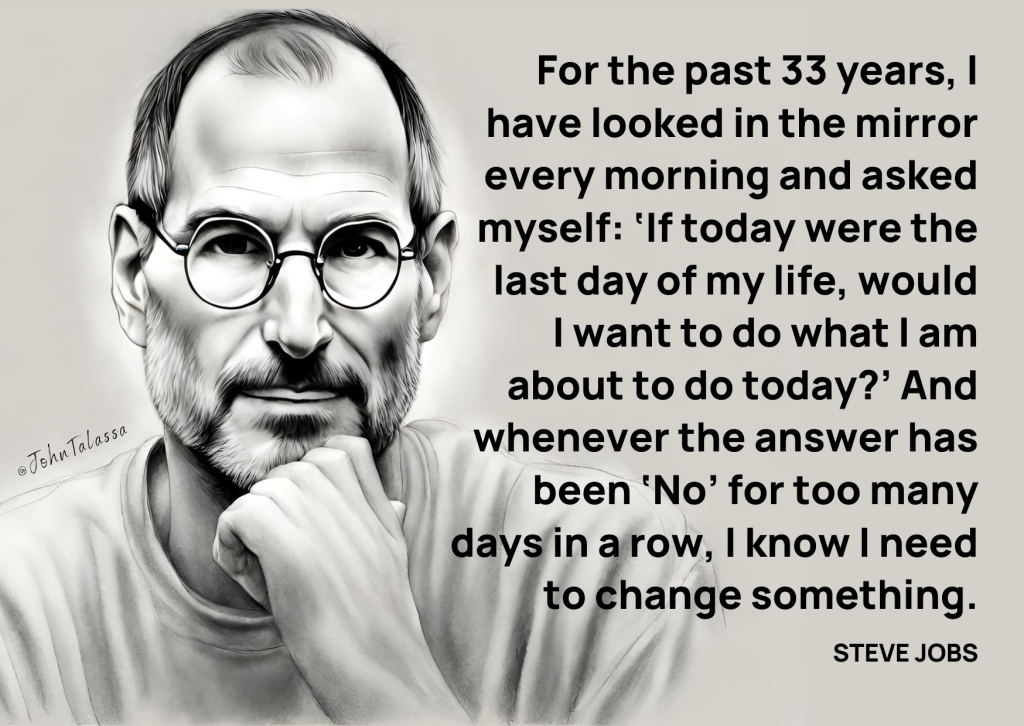
“For the past 33 years, I have looked in the mirror every morning and asked myself: ‘If today were the last day of my life, would I want to do what I am about to do today?’ And whenever the answer has been ‘No’ for too many days in a row, I know I need to change something.”
STEVE JOBS
As a closing point, I urge you to reflect on how many ‘no days’ you’ve had recently. If there are changes you need to make to live a life that you’re proud of, to wake up and look forward to the day ahead, then start making those steps today. Life is too short for mediocrity.
FAQs about Steve Jobs
Unsurprisingly, people want to know everything they can about this inspiring tech mogul. These are some of the burning questions people have about Steve Jobs story.
How much was Steve Jobs worth?
At the time of his death, Steve Jobs was worth $10.2 billion dollars. Around 80% of this came from his shares in Disney, and 20% from his Apple shares. According to the New York Post, Steve Jobs could have become the richest man in the world if he had held onto a larger share of Apple. When he was pushed out of the company he sold all but 1 share of his co-creation. Despite this increasing during his second time as CEO in 1997, his slice of the Apple pie never returned to the size of the 11% share he held in 1980 which would have been worth $330 billion today.
When is Steve Jobs Day?
Every year on the 16th of October is ‘Steve Jobs Day’, a time to recognize his contribution to the world and think of the many lessons he has taught us.
Did Steve Jobs have children?
Steve Jobs has four children, three from his now widow Laurene Powell Jobs. Reed Jobs, born in 1991, Erin Jobs, born in 1995, and his youngest, Eve Jobs, born in 1998. His first child, Lisa Brennan-Jobs, from an earlier relationship, was born in 1978.
What were Steve Jobs’s final & last words?
Poetically, “Oh wow, oh wow, oh wow” were Steve Jobs’s final words, spoken surrounded by his loving family. We can all hope to live a life that makes us look back with awe
What was Steve Jobs’ main contribution to technology?
Steve Jobs co-founded Apple Inc. and was instrumental in the development of innovative products like the iPhone, iPad, iPod, and Macintosh computer. His vision for user-centric design and functionality transformed multiple industries, making technology more accessible and appealing to the masses.
What was Steve Jobs’ leadership style?
Steve Jobs was known for his intense leadership style, characterized by high expectations and a focus on excellence. He encouraged creativity and innovation among his team members but was also known for being demanding and sometimes confrontational. His ability to inspire and motivate his teams was evident in the groundbreaking products Apple produced under his leadership.
How did Steve Jobs handle failure?
Steve Jobs viewed failure as an essential component of success. He believed that setbacks provided vital lessons and opportunities for growth. After being ousted from Apple in 1985, he founded NeXT and later acquired Pixar, both of which contributed to his eventual return to Apple and the company’s resurgence.
What was Steve Jobs’ approach to design?
Jobs had a strong emphasis on aesthetics and user experience. He believed that design should not only be visually appealing but also functional and intuitive. He prioritized simplicity and elegance in product design, famously stating that design is not just what it looks like, but how it works.
How Did Steve Jobs Die?
Steve Jobs passed away on October 5, 2011, after battling a rare form of pancreatic cancer known as a pancreatic neuroendocrine tumor. He was first diagnosed with the illness in 2004, and although he underwent various treatments, including surgery, the disease ultimately progressed. Jobs’ health struggles were private until shortly before his death, when he resigned as Apple’s CEO in August 2011, citing health concerns. His passing marked the end of an era for Apple and the technology industry, as he was widely recognized for his profound impact and innovation in the field.
Does Steve Jobs Have a Movie?
Yes, there are several films that depict the life and legacy of Steve Jobs. The most notable ones include “Steve Jobs,” released in 2015, which was directed by Danny Boyle and starred Michael Fassbender as Jobs. This film is structured around three major product launches— the Macintosh in 1984, the NeXT computer in 1988, and the iMac in 1998—focusing on Jobs’ professional and personal challenges during those pivotal moments. Another notable film is “Jobs,” released in 2013, which features Ashton Kutcher in the role of Steve Jobs. This biographical drama chronicles Jobs’ early years, from his college days to the founding of Apple and the development of groundbreaking products. Both films offer different perspectives on Jobs’ vision, leadership style, and the complexities of his character, making them popular among fans of technology and cinema alike.

